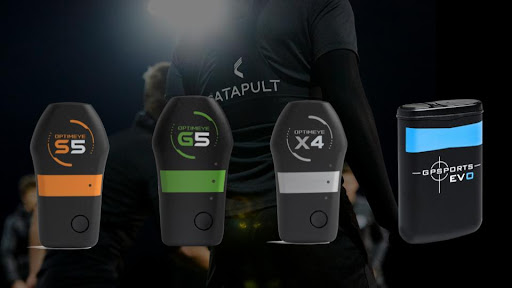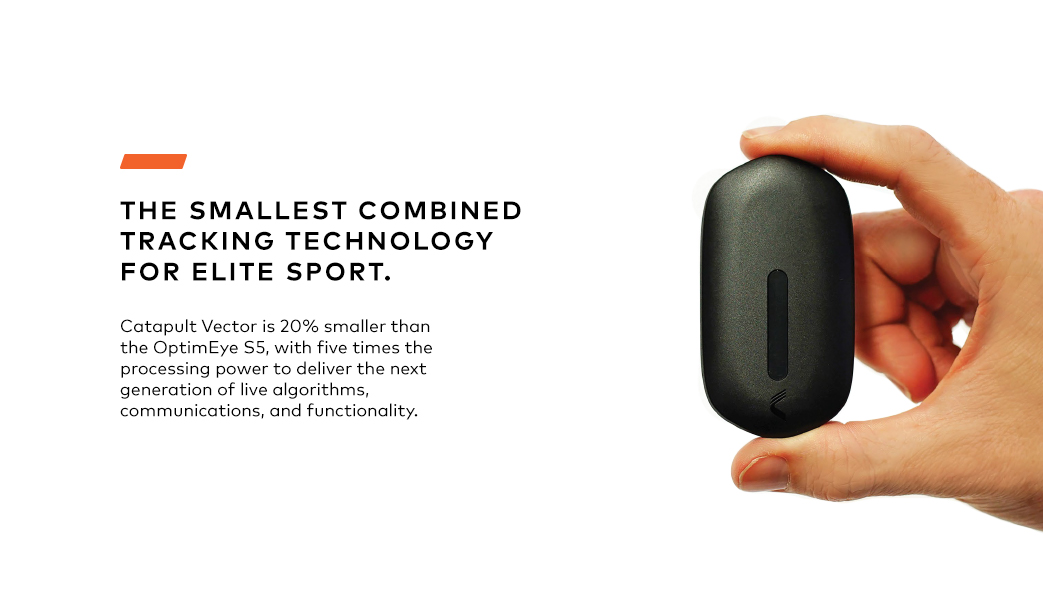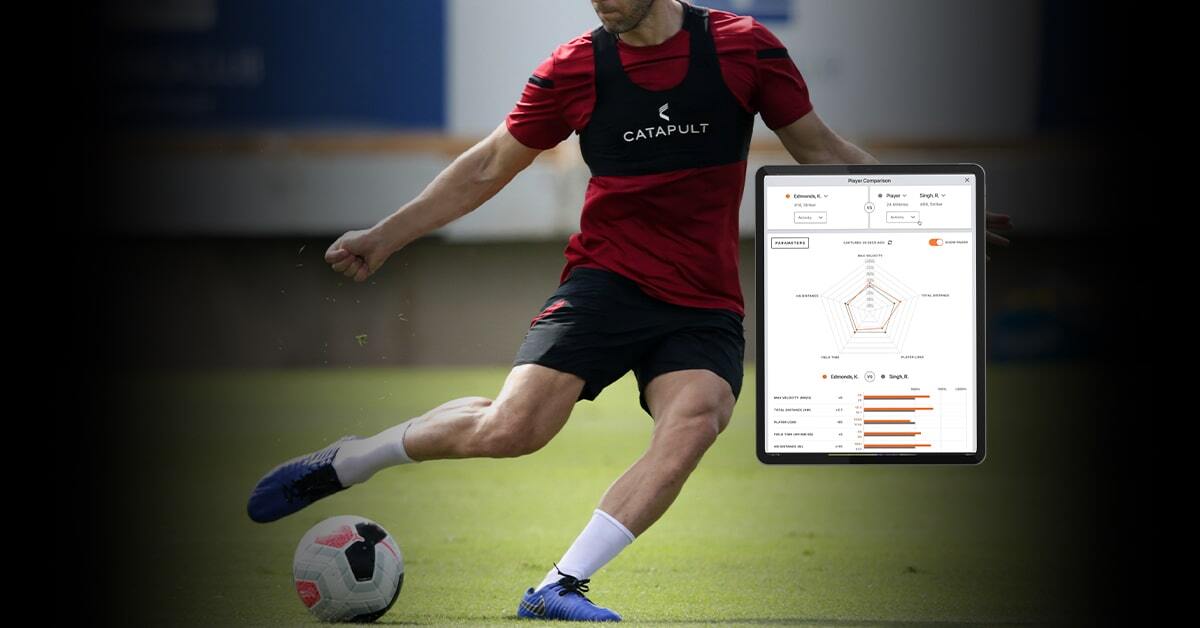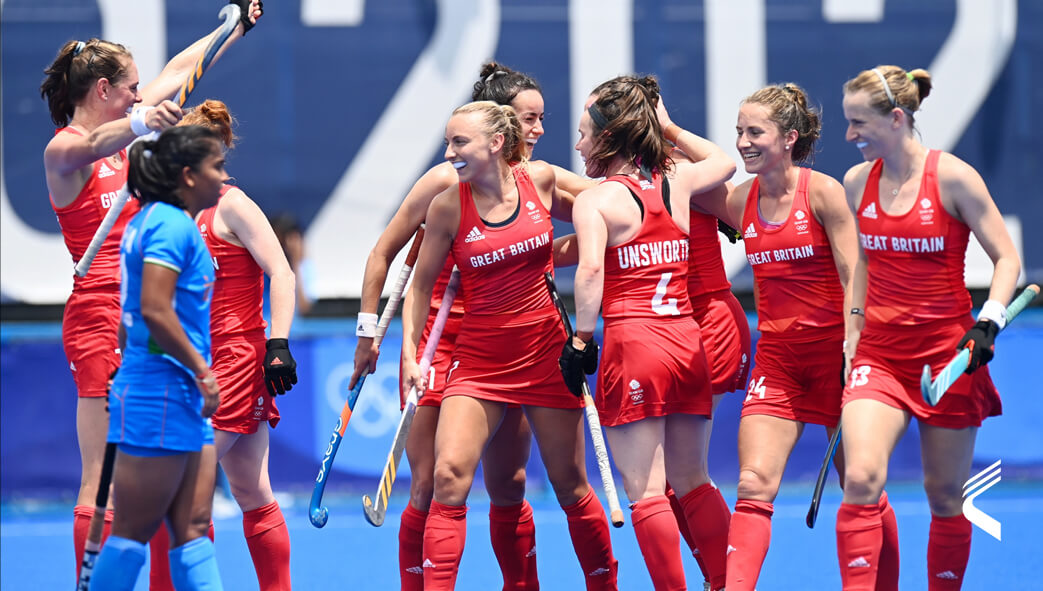How The Athlete Monitoring Legacy Continues With Vector
With the return of many of our favourite sports competitions, the industry recently witnessed a wider adoption of performance-based technology amongst elite organizations, clubs, coaches, and athletes. This blog explores the past, present, and future of athlete monitoring across sports.
Athlete Monitoring has a long history in a variety of sports, something Catapult has always been at the forefront of. Today, Catapult’s athlete monitoring solutions provide teams with powerful athlete performance data allowing staff to make objective decisions about athletes, maximize their performance, and avoid costly injuries.
The wearable technologies developed by Catapult in its early years were designed to address fundamental questions in sports performance. For example, back in 2005, Catapult launched the first combination of GPS and accelerometers in a team-based wearable which was used in multiple sports during the Beijing Olympics in 2008.
Catapult has continued to work at the Olympic level and at the most recent Tokyo 2020 Games – Catapult athletes and teams collectively won 24 medals. Interestingly, this feat meant that Catapult athletes outperformed 74 countries, earning eight gold, five silver, and eight bronze medals. If Catapult were a country, we would place 11th in the overall medal table among the 86 competing nations. Read more about this success here.
Beyond Olympic sports
The application of athlete monitoring technology in sports extends beyond the Olympics, and one of the biggest milestones was the launch of OptimEye in 2014. Catapult’s 5th generation wearable technology. OptimEye came in three variants -S5,G5,X4. Three variants allowed for sport-specific insights spanned a range of different price points as the use of athlete monitoring technology filtered down sports competition pyramids and fulfilled varied customer needs.

At the time of development, most competitor products used GPS to generate athlete tracking data. But a common problem with GPS was maintaining performance in obstructed environments like football stadiums – this distorted the accuracy of many athlete monitoring devices.
To solve this challenge, the OptimEye devices used GNSS (Global Navigation Satellite System) rather than just GPS (Global Positioning System). Learn more about GNSS here. The differentiation created in the market around data quality through leveraging GNSS, the inclusion of sports-specific analytics (including IMA) and the close alignment of the Catapult brand with the sports science community drove the success of OptimEye product range.
The OptimEye S5 was Catapult’s flagship device from 2014-2019, used by the world’s leading sporting organizations including New England Patriots, Seattle Seahawks, Houston Astros, Leicester City FC, Club Atlético de Madrid, Club Atletico Boca Juniors, Australian Football League (AFL), Welsh Rugby Union, and the English and Australian National Cricket teams.
OptimEye G5 was the world’s first position-specific wearable tracking device in elite sports. It was engineered specifically for soccer goalkeepers, with a suite of specific analytics tailored to the demands of the position.
Video of English Premier League Club AFC Bournemouth introducing G5 in 2017:
G5 helped to differentiate Catapult products in the soccer market and opened conversations with teams who had competitor GPS tracking technology. Once described as Catapult’s Trojan Horse it opened many doors with its unique value proposition.
Catapult X GPSports
In parallel, EVO was another product that was developed by Catapult following the acquisition of GPSports in 2014. It was the Evolution of the GPSports product. The aim of the EVO was to transition the loyal GPSports customer base from the GPSports products to the Catapult suite by delivering the core elements of the product experience that they heavily valued.
EVO remains the smallest GPS tracking device Catapult has ever produced. It had a host of savvy features like live acceleration efforts, Polar integrated heart rate and a smart dock, all designed to drive user efficiency and real time decision making. The EVO was paired with the GPSports Cloud and Console that were built on the OpenField backend. The software offered a powerful analysis, simplified user experience and consistency with OptimEye data. EVO was the catalyst to drive new value into the core Catapult products with metrics like Generation 2 Velocity and Acceleration Efforts, and Running Symmetry quickly adopted.
Strategically, EVO was successful with the vast majority of the GPSports customers from 2014, using Catapult Vector and OpenField today. This includes some of our major customers like Chelsea FC, Bayern Munich, Celtic FC, Australian Rugby Union and the Australian National Rugby League (NRL). EVO was distributed predominantly in Europe and in the Asia Pacific region from 2016-2019.
7th Generation athlete monitoring device
In 2019 we launched Catapult Vector to supersede both the OptimEye and EVO products and bring the user groups together on a single product line. Vector carried forward the best attributes of these products and combined them with the latest technologies to deliver further improvements in data accuracy, user efficiency and the live tracking experience. OptimEye and EVO paved the way for our success in the Athlete Monitoring space.
–> To learn more and take advantage of Vector, click here to download our free brochure.

Live metrics and contextualised insights
And so, the legacy continues – as the industry’s leading athlete monitoring solution we constantly aim to give coaches, analysts, medical staff, and sports scientists better insights and provide more context to the collected data.
Within the Vector Live App, sports scientists and strength coaches can now more easily capture detailed athlete data directly from the sidelines, keep coaches informed instantly, and impact game or practice strategies in real-time which helps save hours typically spent analyzing athlete data after practice and competitions.
–> Click here to discover more about the Vector Live App.

As the world leader in athlete monitoring, Catapult is uniquely positioned to revolutionise performance analysis and has recently released the integration of performance data and video analysis. Honed from the pit walls of F1, this technology allows teams to sync athlete performance data from Catapult’s Vector wearable devices with MatchTracker, the most powerful video analysis solution, for the first time. While being available for football and rugby since the beginning of 2022, integrated solutions will be rolled out for basketball, hockey and American football in the coming months.
Today, Catapult creates the future of professional team analytics with the integration of performance data and video analysis. For the first time, athlete performance data from Catapult’s Vector wearable devices syncs with MatchTracker, the most powerful video analysis application for top-tier teams.
Now, every physical metric is connected to video footage, viewable at every game moment. Performance staff, video coordinators, and other team personnel can gain a new level of analytical insight with Catapult’s new integrated performance data and video analysis solution.
–> Try Performance Data + Video for free, click here to request a demo.
Integrated performance analytics: User benefits
- Contextualized performance insights – Until now, performance staff, video coordinators, and other team personnel had to use multiple systems to analyze training and games. Using multiple systems is costly, not intuitively collaborative, and has caused the analysis workflow to become time-consuming.
- Unlocking positional data – Teams without access to optical data have previously missed out on the opportunity to evaluate athlete positioning in-game and during training sessions. Now, this performance data and video solution addresses this challenge by integrating athlete data through built-in wearable GPS tracking.
- Improving workflow efficiency – This new data and video solution improves user workflow efficiency, saving precious time. The integration harnesses the best features of performance data and video analysis solutions – connected data, AI-powered tools and sport-specific algorithms – to automatically identify match states and connect physical metrics of involved players.
